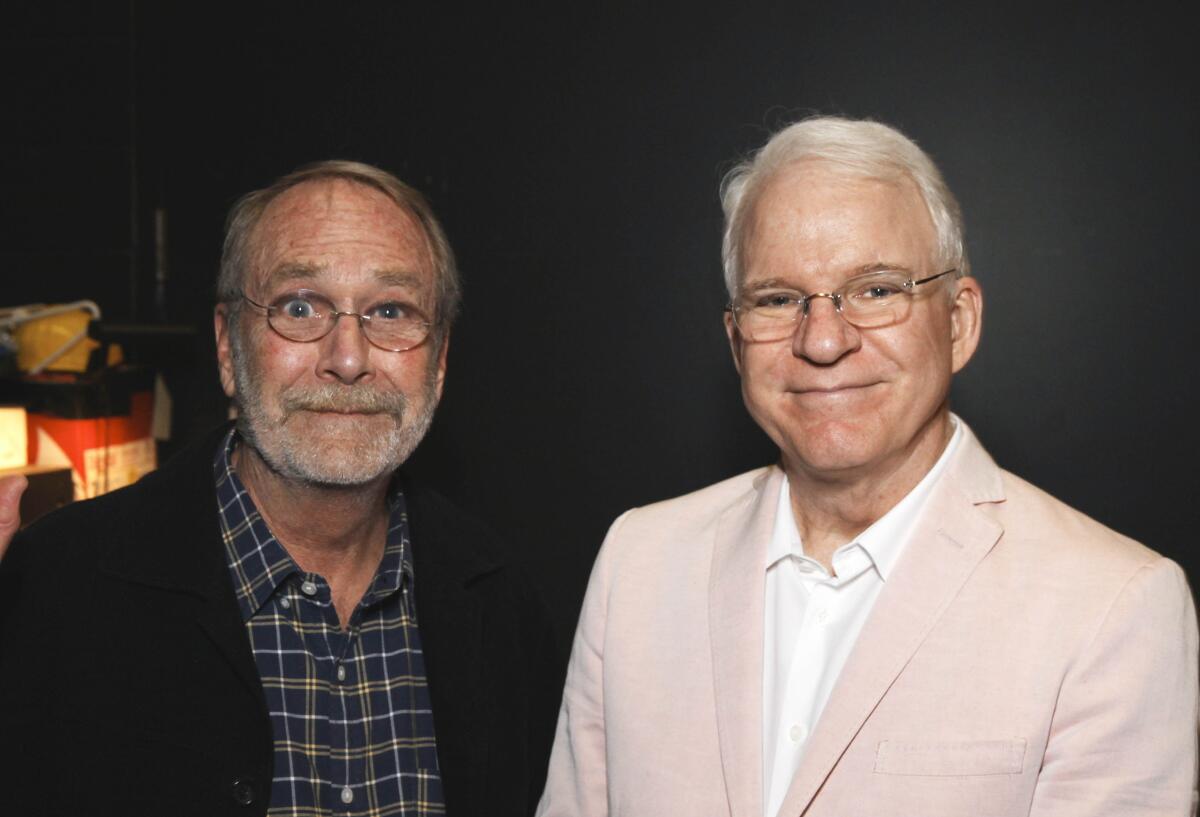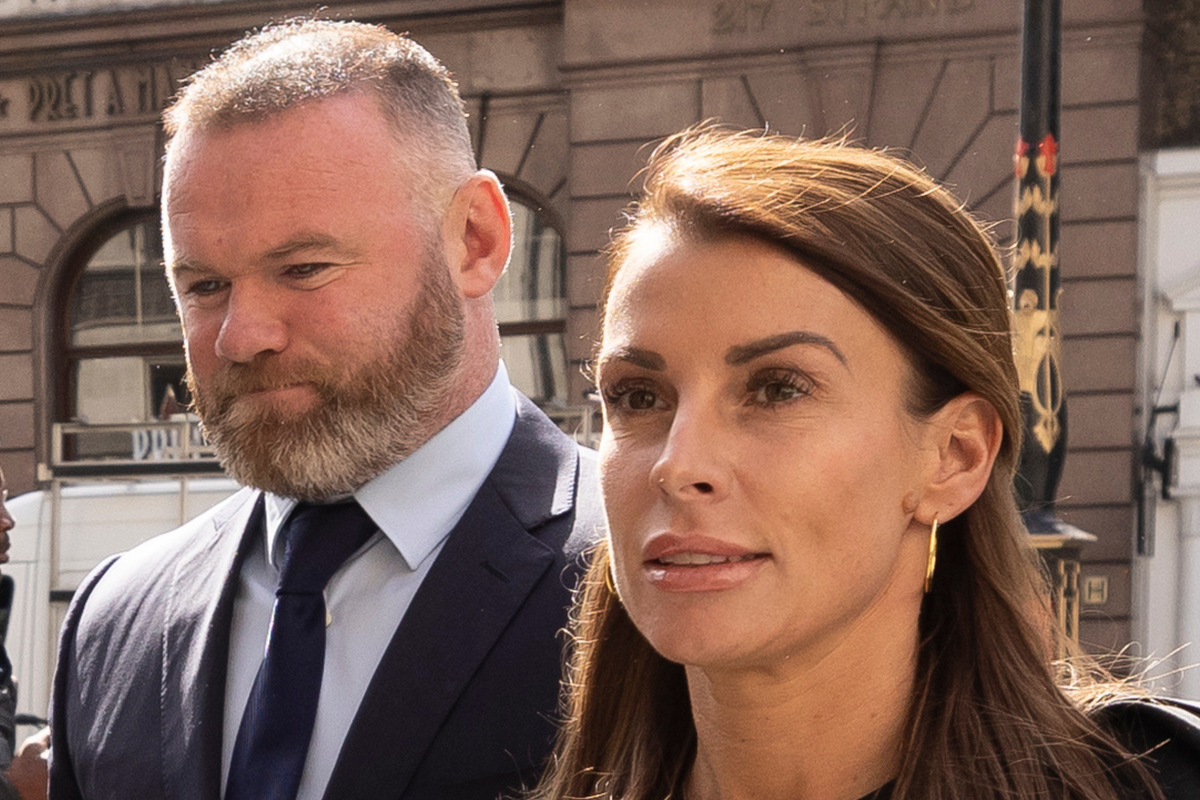For anyone lucky enough to have experienced the long arc of his career, the death of droll, dry, deadpan Martin Mull, Thursday at 80, feels like the end of an era. A writer, songwriter, musician, comedian, comic actor and, out of the spotlight, a serious painter, Mull was a comfortingly disquieting presence — deceptively normal, even bland, but with a spark of evil. Martin Mull is with us, one felt, and that much at least is right with the world.
There was a sort of timelessness in his person. As a well-dressed, articulate young person, he seemed older than his years; later on, owl-eyed behind his spectacles, he came across as oddly boyish.
He leaves behind a long, uninterrupted string of screen credits, beginning with Norman Lear’s small-town soap opera satire “Mary Hartman, Mary Hartman.” Following that were regular roles in “Roseanne,” “Sabrina the Teenage Witch,” “Veep” and “Arrested Development”; guest shots including “Taxi” and “Law & Order: Special Victims Unit”; and work in such films as “Mr. Mom,” “Clue” and “Mrs. Doubtfire.”
And so it seemed he would always be around, and working. Even so, his appearances were never quite expected, or in the expected place. But he was ever welcome, and always right for the job.
Like Steve Martin, his friend and junior by two years, he was an accomplished instrumentalist. As a purveyor of witty comic songs, Mull was in the tradition of Tom Lehrer and Flanders and Swann and a peer of Dan Hicks, with whom he shared a taste in floral-print shirts. He was a countercultural cabaret artist who set himself apart from the counterculture. Again like Martin, he dressed well in an age when younger comics let their hair grow long and wore street clothes to distinguish themselves from their suit-and-tie elders.
But where Martin was a flurry of flapping arms and legs, Mull worked from a place of stillness. His musical stage act, Martin Mull & His Fabulous Furniture, found him in his signature prop, a big armchair, leaning forward over his big, hollow-body guitar.
“Ever seen one of these before? It’s electric. You’ll be seeing a lot of those in the near future,” he said.
Later, he leaned back as Barth Gimble, the host of the talk show parodies “Fernwood 2 Night” and “America 2 Night.” Even his solo spots on “The Tonight Show” — on which he was a hilarious, blue-streak-talking guest, usually playing off his career in show business — were delivered sitting.
On “Mary Hartman, Mary Hartman,” Mull played Garth Gimble, an abusive husband who died impaled on the star of a Christmas tree. One would say that Garth had to die in order that Barth, his twin brother, might live. On the spun-off “Fernwood 2 Night,” Mull and Fred Willard, as confidently dim sidekick Jerry Hubbard, created a telepathic double act in which they could seem antithetical expressions of a single character.
Together, the talk shows lasted only two summer seasons; but due to their weeknight appearances, they produced 130 episodes, giving them cultural weight. (You may find them extracted all over the internet.) Mull and Willard would work together again over the years, in the Cinemax series “The History of White People in America” and the follow-up feature “Portrait of a White Marriage,” in commercials for Red Roof Inn, as a gay couple on “Roseanne” and as robots on “Dexter’s Laboratory.”

Martin Mull, left, with fellow comedian Steve Martin in Santa Monica in 2014.
(Ryan Miller / Invision)
Mull grew up in North Ridgeville, Ohio, not far from Fernwood in the map of the imagination, and white insularity was a theme in his comedy. My first Mull memory came with the 1973 album “Martin Mull & His Fabulous Furniture in Your Living Room,” which opened with a version of “Dueling Banjos” played on tubas. The record included a “Lake Erie delta” blues song, purportedly learned from his real estate agent grandfather. It was performed on a ukulele with a baby bottle used as a slide: “I woke up this afternoon / Both cars were gone / I felt so low down deep inside / I threw my drink across the lawn.”
“The History of White People in America,” he told David Letterman, would examine “what, if anything, has the white Anglo-Saxon Protestant done in this country since World War I. It’ll be taking a pretty good hard look at that.”
A memorable episode of “Fernwood” exhibits a Jewish person stopped for speeding as he passed through town as something of an exotic animal, for the benefit of Fernwoodians who may have “actually never seen a real live Jew before.”
“I hope that seat’s all right,” Barth says, welcoming his guest. “ I’m not sure what you’re used to.”
Like many great comedians — the Marx Brothers and W.C. Fields before him, or Albert Brooks in his own time — Mull was a temperamental outsider who achieved the success of an insider, while remaining essentially untamed. It’s not beside the point that he was, from first to last, a serious artist. He held undergraduate and graduate degrees from the Rhode Island School of Design — where, it does not seem too coincidental to mention, the Talking Heads were born. He would refer to show business as a “day job” that allowed him to pursue painting.
We were lucky he needed the work.


